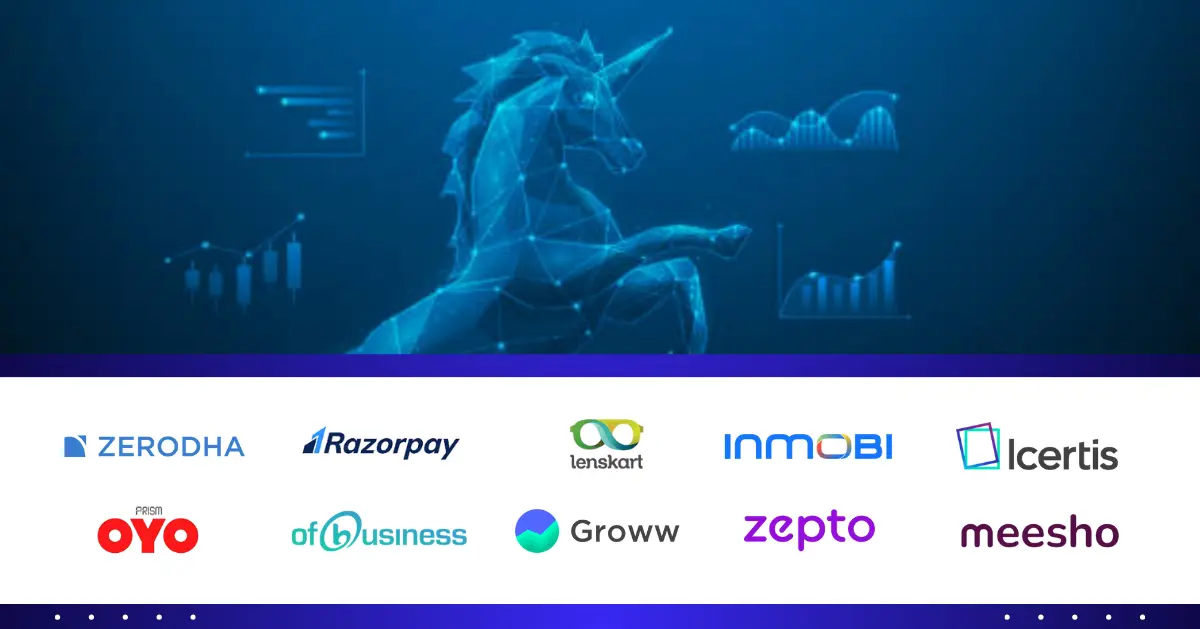
Introduction
In recent years, E-commerce Growth has emerged as one of the most dynamic segments of the digital economy. The rise of smartphones, increased internet penetration, and the government’s push for a digital economy have fueled the surge in online business activities, especially in India. As more consumers turn to digital platforms, businesses are compelled to adapt and innovate in their approach. This article aims to provide you with an in-depth understanding of E-commerce Growth and practical strategies to thrive in the competitive online marketplace. By implementing the right marketing tactics, focusing on customer experience, and managing challenges effectively, businesses can achieve significant revenue growth and long-term success.
What is E-commerce Growth?
E-commerce Growth refers to the expansion of online commercial activities, characterized by an increase in sales, customer base, and overall market reach through digital channels. It is measured through various metrics such as website traffic, conversion rates, average order values, and customer retention rates. In simple terms, It is not just about more transactions but also about building a sustainable model that leverages technology and data to improve business outcomes.
For an online business, achieving E-commerce Growth means creating a scalable system that can handle increased demand while maintaining excellent service quality. This growth is driven by innovative marketing tactics and a focus on improving customer satisfaction, which in turn leads to increased revenue growth.
Key Drivers of E-commerce Growth in India and Globally
The rapid expansion of e-commerce can be attributed to several key drivers:
- Digital Infrastructure and Internet Penetration
India has seen a massive increase in internet access, largely due to affordable smartphones and data plans. This improved connectivity has enabled more people to participate in online business activities, driving E-commerce Growth. Globally, countries with strong digital infrastructures have witnessed similar trends, making it easier for businesses to expand their reach. - Government Initiatives and Regulatory Support
In India, initiatives like Digital India have been instrumental in boosting the digital economy. Supportive regulations and policies create an environment that fosters E-commerce Growth. Similar government initiatives in other countries also play a critical role in nurturing online businesses. - Changing Consumer Behavior
Consumers today are more inclined to shop online for convenience, competitive pricing, and a wider variety of products. This shift in consumer behavior is a major catalyst for E-commerce Growth both in India and internationally. Understanding these trends helps businesses tailor their marketing tactics to meet evolving demands. - Adoption of Technology and Data Analytics
The use of big data, artificial intelligence, and machine learning enables businesses to personalize shopping experiences and streamline operations. Such technological advancements not only drive E-commerce Growth but also contribute significantly to revenue growth by targeting the right customers at the right time. - Innovative Marketing Tactics
Effective digital marketing strategies, including social media campaigns, search engine optimization, and influencer partnerships, are critical for scaling an online business. These marketing tactics ensure that products reach a broader audience, thereby accelerating E-commerce Growth and boosting revenue growth.
How to Scale an E-commerce Business?
Scaling an online business in today’s competitive landscape requires a strategic approach. Here are some actionable steps to help you drive E-commerce Growth:
- Invest in Technology and Automation
To manage increasing orders and customer interactions, invest in robust e-commerce platforms and automation tools. These technologies help streamline operations, reduce manual errors, and provide valuable insights into consumer behavior, which are essential for revenue growth. - Adopt Data-Driven Decision Making
Leverage data analytics to understand customer preferences and optimize your business strategies. By monitoring key performance indicators, you can refine your marketing tactics and target efforts more effectively to drive E-commerce Growth. - Enhance Digital Marketing Efforts
Utilize a mix of traditional and digital marketing tactics. SEO, pay-per-click advertising, email marketing, and social media campaigns can all help in expanding your online business. Tailoring these strategies to the local market—especially in India—ensures that you connect with your target audience more effectively. - Strengthen Supply Chain and Logistics
Efficient supply chain management is crucial for scaling an e-commerce operation. Focus on building partnerships with reliable logistics providers to ensure timely deliveries and maintain high customer satisfaction. This investment supports E-commerce Growth by ensuring that increased demand is met with consistent service quality. - Expand Product Range and Market Reach
Continuously evaluate market trends and consumer feedback to introduce new products. This proactive approach not only drives revenue growth but also keeps your online business competitive in a fast-changing market. - Focus on Building Brand Loyalty
A loyal customer base is invaluable for long-term E-commerce Growth. Offer incentives, loyalty programs, and personalized experiences that encourage repeat purchases, leading to sustained revenue growth.
Importance of Customer Experience in E-commerce Growth
Customer experience is at the heart of any successful online business. When customers have a positive shopping experience, they are more likely to return and recommend your brand to others. Here’s why customer experience is critical for E-commerce Growth:
- Trust and Credibility
A seamless and secure shopping experience builds trust. In India, where online fraud is a concern, providing secure payment gateways and transparent return policies is essential for fostering E-commerce Growth and revenue growth. - Personalization and Engagement
Use customer data to tailor recommendations and create a personalized shopping journey. By focusing on customer satisfaction, businesses can implement effective marketing tactics that enhance loyalty and drive E-commerce Growth. - Responsive Customer Support
Efficient and friendly customer support can resolve issues promptly, turning potential negatives into positives. This commitment to service can lead to higher customer retention, which is a key component of revenue growth. - User-Friendly Website and Mobile App Design
A well-designed website or mobile app that is easy to navigate significantly improves the shopping experience. Ensuring that your online business platform is optimized for all devices is crucial for sustaining E-commerce Growth in an increasingly mobile-first market.
Common Challenges in E-commerce Expansion and Their Solutions
While the opportunities for E-commerce Growth are vast, businesses often face several challenges. Here are some common hurdles and strategies to overcome them:
- Logistical Issues and Supply Chain Management
One of the biggest challenges for e-commerce businesses is managing logistics effectively. Delayed deliveries and inventory issues can harm customer satisfaction. Solutions include partnering with reliable logistics providers, investing in warehouse management systems, and leveraging technology to track shipments in real time. - Intense Competition
The online marketplace is highly competitive, with numerous players vying for customer attention. To stand out, businesses need to differentiate themselves through unique product offerings, superior customer service, and innovative marketing tactics that resonate with local audiences. - Technological Adaptation and Cybersecurity
As digital transactions increase, so do the risks of cyberattacks. Investing in robust cybersecurity measures and regularly updating technology can mitigate these risks and support sustained E-commerce Growth. - Regulatory and Compliance Issues
Navigating the regulatory landscape can be challenging, particularly in a diverse market like India. Staying updated with local laws and working with legal experts can ensure that your online business remains compliant, thereby avoiding potential setbacks in revenue growth. - Changing Consumer Preferences
Consumer behavior can change rapidly. Regularly collecting and analyzing feedback allows businesses to stay agile and adapt their offerings to meet evolving needs. This responsiveness is key to maintaining E-commerce Growth and ensuring long-term success.
Conclusion
Achieving E-commerce Growth requires a multifaceted strategy that combines technological investment, data-driven decision making, and customer-centric practices. As seen in the Indian market, robust digital infrastructure, supportive government policies, and changing consumer behavior are significant drivers of this growth. By implementing innovative marketing tactics, focusing on delivering exceptional customer experiences, and overcoming operational challenges, online businesses can experience significant revenue growth and establish a strong presence both locally and globally.
Embracing these strategies will not only help your online business scale effectively but also ensure that you remain competitive in an ever-evolving digital landscape. Whether you are a small start-up or an established enterprise, understanding and implementing these e-commerce growth strategies is essential for sustainable success.
At RegisterKaro, we simplify the complexities about the E-commerce growth strategies and other finance related topics. For more information on this topic or more such finance related topics, visit our services page or contact our support team directly.
Frequently Asked Questions (FAQs)
1. What does E-commerce Growth mean?
It refers to the expansion of online sales and customer engagement through digital channels. It involves increasing transaction volume, customer base, and market reach. Achieving E-commerce Growth involves leveraging technology and innovative marketing tactics to drive revenue growth.
2. How important are digital marketing tactics in scaling an online business?
Digital marketing tactics are crucial for scaling an online business. They help in reaching a wider audience, engaging potential customers, and ultimately driving E-commerce Growth and revenue growth. Effective strategies include SEO, social media marketing, and targeted advertising.
3. What are the key drivers of E-commerce Growth in India?
Key drivers include increased internet penetration, mobile connectivity, government initiatives like Digital India, changing consumer behavior, and advanced technology adoption. These factors create a fertile environment for E-commerce Growth and provide ample opportunities for revenue growth.
4. How can an online business overcome logistical challenges?
Overcoming logistical challenges involves investing in efficient supply chain management, partnering with reliable logistics providers, and using technology to monitor deliveries. Addressing these challenges is critical for maintaining customer satisfaction and ensuring steady E-commerce Growth.
5. Why is customer experience important for E-commerce Growth?
Customer experience is a vital element in driving E-commerce Growth because it builds trust and loyalty. A positive experience, from a user-friendly website to responsive customer support, not only encourages repeat business but also fosters revenue growth through customer retention and referrals.




